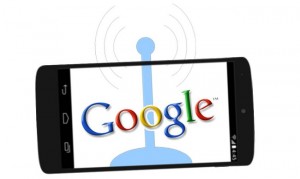The company is now working location based news opportunities into its offerings for mobile users.
The last decade has been just as defining as the one before it in terms of changing the way that people consume news and media as a whole, and Blockfeed is now jumping onto the latest trend that uses geolocation to ensure that people are receiving the stories that are relevant to them.
A large number of major news publications are already offering online alternative options, but this is another step up.
The new Blockfeed app has now launched for Android devices and is marketing itself as a new way for people to be able to consume news media. This is because it works with geolocation data from within a smartphone or tablet. It uses that data to be able to “hyper localize” its experience in order to generate a relatively precise one. In some cases, the experience can be brought right down to a city block from the user’s actual location. The mobile app then curates stories that have been aggregated from a broad spectrum of different sources and presents them to the user in a list.
This geolocation based list of stories can then be viewed by the user who can select the story that interests them.
 When the story is selected, the user is directed to the actual source page where it was initially published, so that they can continue to read as much of it as they’d like. The Blockfeed app also uses a type of algorithm that allows the popularity of a specific story to be recognized. That algorithm takes into account a number of different factors, such as the number of times the story has been shared over social media. Those factors also help to decide which stories will be at the top of the list when the app is opened up.
When the story is selected, the user is directed to the actual source page where it was initially published, so that they can continue to read as much of it as they’d like. The Blockfeed app also uses a type of algorithm that allows the popularity of a specific story to be recognized. That algorithm takes into account a number of different factors, such as the number of times the story has been shared over social media. Those factors also help to decide which stories will be at the top of the list when the app is opened up.
Equally, it also ensures that there is a full spectrum of news media available to the reader, as smaller blogs are placed right along with the major publications.
The initial launch of Blockfeed has made its geolocation capabilities available only to users who are in New York City, which is where the headquarters of the company are located. That said, the company did report that it intends to bring the news app to other “dense urban areas” and “high-quality local journalism scenes”. For the time being, New York City suits that need perfectly and is the home of the initial launch, but it will be expanded and rolled out in other areas over time.

 Once a smart device has detected a beacon, it is capable of receiving data from it. The user of the mobile device has control over what type of data he or she wants to receive by way of the settings that have been allowed in the apps that have been downloaded. Based on those settings, the smartphone chooses which beacon information will trigger a response within the mobile device.
Once a smart device has detected a beacon, it is capable of receiving data from it. The user of the mobile device has control over what type of data he or she wants to receive by way of the settings that have been allowed in the apps that have been downloaded. Based on those settings, the smartphone chooses which beacon information will trigger a response within the mobile device.